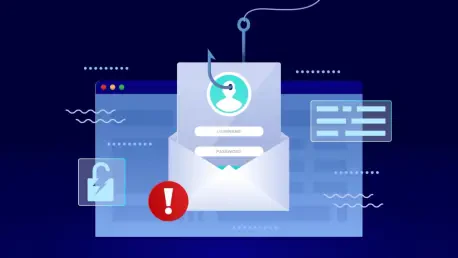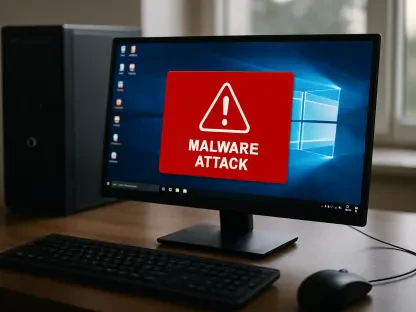What happens when the very tools designed to safeguard digital lives become weapons in the hands of cybercriminals? In 2025, phishing attacks targeting Microsoft 365 credentials have reached unprecedented levels of sophistication, exploiting trusted platforms and user familiarity to bypass even the most robust defenses. This alarming trend has left businesses and individuals scrambling to protect sensitive data, as attackers wield deceptive tactics that are nearly impossible to detect at first glance. Dive into the shadowy world of cybercrime to uncover how these silent thieves operate and what can be done to stop them.
The Growing Shadow over Microsoft 365
The importance of this issue cannot be overstated. As millions of users rely on Microsoft 365 for critical business operations, collaboration, and communication, the platform has become a prime target for phishing campaigns. Stolen credentials can lead to devastating consequences, from data breaches exposing proprietary information to financial losses that cripple organizations. With cybercrime costs projected to escalate dramatically from 2025 to 2027, understanding and countering these threats is no longer optional—it’s a necessity for survival in a digital-first world.
Why Cybercriminals Are Winning at Trust
Cybercriminals have mastered the art of deception by leveraging the trust users place in familiar services. By exploiting legitimate tools like link-wrapping services provided by vendors such as Proofpoint, attackers cloak malicious URLs with a veneer of authenticity. These wrapped links, often appearing as trusted domains, trick users into believing they are safe, only to redirect them to counterfeit login pages designed to harvest Microsoft 365 credentials. This cunning manipulation of trust is a cornerstone of modern phishing strategies, making detection a daunting challenge for even seasoned IT professionals.
The scale of this problem is staggering. Reports from cybersecurity researchers indicate that phishing attacks abusing trusted services have surged, with many organizations unaware of the compromised accounts within their own systems being used to send these deceptive emails. This exploitation not only undermines security protocols but also erodes confidence in the very mechanisms meant to protect digital interactions, creating a vicious cycle of vulnerability.
The Anatomy of a Sophisticated Phishing Attack
Peeling back the layers of today’s phishing campaigns reveals a chilling level of ingenuity. Attackers employ multi-tiered redirect chains, combining link shorteners like Bitly with wrapped URLs to create complex paths that evade traditional security scans. These redirection tactics obscure the final destination—a fake Microsoft 365 login page—making it nearly impossible for automated systems to flag the threat before it reaches the user. Cloudflare Email Security has described this method as a pivotal shift in how malicious intent is hidden from view.
Beyond redirects, phishing emails often mimic everyday communications, such as voicemail alerts or Microsoft Teams notifications, to lure users into clicking malicious links. Another emerging tactic involves embedding harmful scripts in Scalable Vector Graphics (SVG) files, which appear as innocuous images but harbor executable code. As noted by the New Jersey Cybersecurity and Communications Integration Cell, this technique represents a dangerous evolution in how attackers weaponize seemingly harmless attachments to steal sensitive information.
Expert Voices on the Phishing Frontline
Cybersecurity professionals are grappling with the rapid adaptability of these threats. A researcher from Cloudflare has called multi-tiered redirect abuse “a game-changer in obscuring malicious intent,” highlighting how attackers continuously refine their methods to stay ahead of defenses. This sentiment is echoed by analysts at Cofense, who have observed stolen data being funneled through encrypted messaging apps like Telegram, adding another layer of difficulty to tracking and recovering compromised information.
These expert insights paint a sobering picture of the current landscape. The consensus is clear: phishing campaigns are no longer just about casting a wide net but about precision and exploitation of trusted infrastructure. With attackers leveraging legitimate platforms to execute their schemes, the cybersecurity community faces an uphill battle to develop countermeasures that can keep pace with such dynamic threats.
Real-World Deceptions: Phishing in Action
Consider the case of a mid-sized corporation that fell victim to a phishing email disguised as a Zoom meeting invite. Employees, accustomed to frequent virtual meetings, clicked on a link that led to a realistic-looking interface, only to encounter a “connection timed out” error prompting them to re-enter their credentials. Unbeknownst to them, this act handed over their Microsoft 365 login details to cybercriminals, who then accessed sensitive company data. This incident underscores how attackers exploit routine behaviors to devastating effect.
Another prevalent lure involves fake Microsoft Teams notifications urging users to “Reply in Teams” via an embedded button. These messages capitalize on the urgency and familiarity of workplace tools, directing unsuspecting individuals through obfuscated redirect chains to fraudulent login portals. Such real-world examples illustrate the depth of psychological manipulation at play, where even cautious users can be deceived by the smallest oversight.
Arming Against the Invisible Threat
Equipping individuals and organizations with practical defenses is critical to countering phishing attacks. Start by scrutinizing every email, even those from seemingly trusted sources, and verify URLs before clicking. A moment of hesitation can prevent a catastrophic breach. Additionally, enabling multi-factor authentication across all Microsoft 365 accounts adds a vital barrier, ensuring that stolen credentials alone are not enough to gain access.
For organizations, investing in advanced threat detection systems capable of identifying multi-layered redirection chains and unusual file behaviors, such as malicious SVGs, is essential. Regular employee training should also be prioritized to recognize phishing lures tailored to workplace tools like Teams or Zoom. These proactive measures, when consistently applied, can significantly reduce the risk of falling prey to sophisticated cyber threats.
Looking back, the battle against phishing attacks targeting Microsoft 365 credentials revealed a stark reality: cybercriminals had turned trust into a weapon, exploiting familiar platforms with ruthless precision. Yet, amid the challenges, actionable steps emerged as beacons of hope. By fostering vigilance, enhancing authentication protocols, and deploying cutting-edge detection tools, both individuals and organizations took strides toward reclaiming digital security. As the landscape of cyber threats continues to evolve, staying ahead demands not just reaction but anticipation—building defenses that adapt as swiftly as the tactics of those who seek to breach them.









